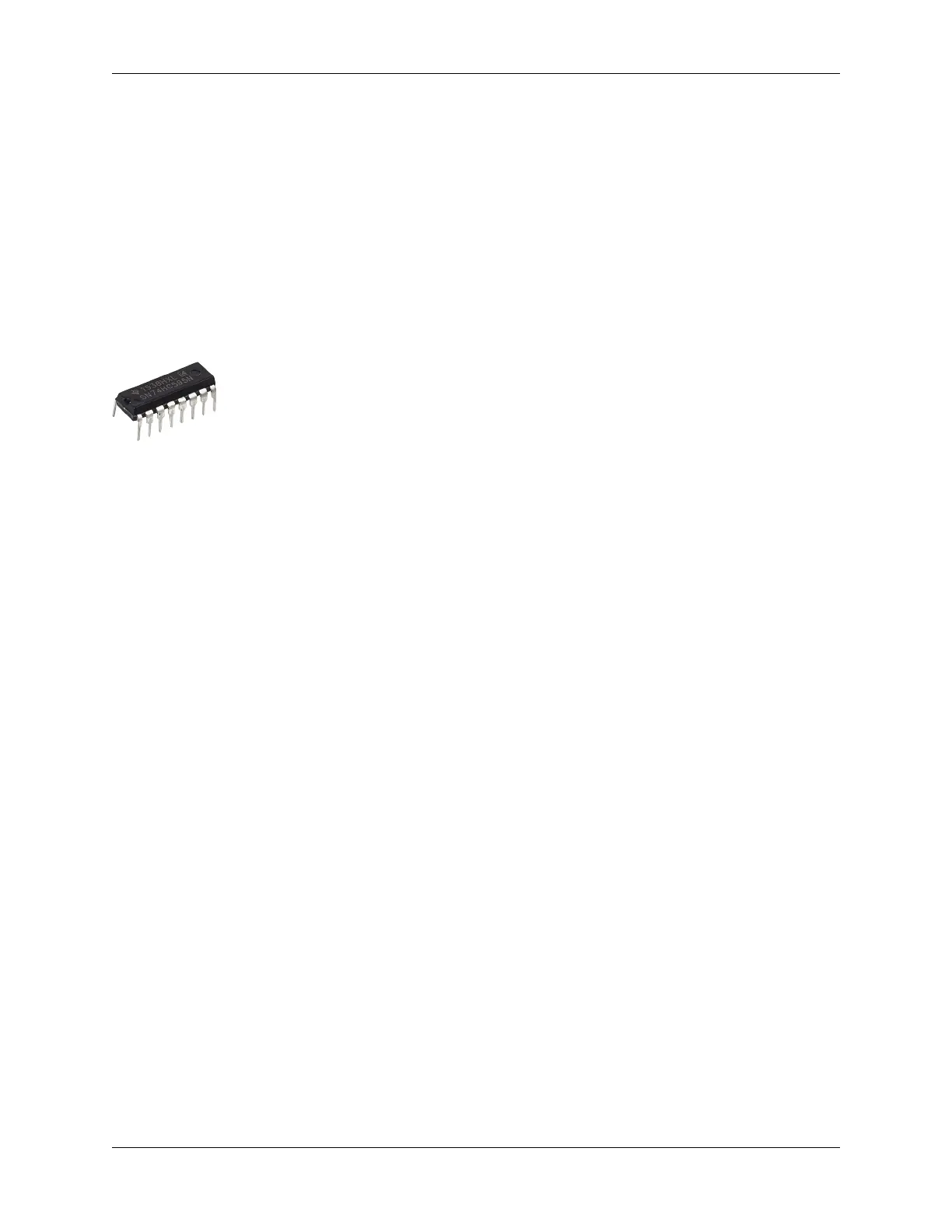SunFounder ESP32 Starter Kit
• 3.1 Beep (Arduino Project)
• 6.1 Fruit Piano (Arduino Project)
• 5.6 Two Kinds of Transistors (MicroPython Project)
• 3.2 Custom Tone (MicroPython Project)
• 6.3 Light Theremin (MicroPython Project)
Chip
5.8 74HC595
Do you ever find yourself wanting to control a lot of LEDs, or just need more I/O pins to control buttons, sensors, and
servos all at once? Well, you can connect a few sensors to Arduino pins, but you will soon start to run out of pins on
the Arduino.
The solution is to use “shift registers”. Shift registers allow you to expand the number of I/O pins you can use from the
Arduino (or any microcontroller). The 74HC595 shift register is one of the most famous.
The 74HC595 basically controls eight independent output pins and uses only three input pins. If you need more than
eight additional I/O lines, you can easily cascade any number of shift registers and create a large number of I/O lines.
All this is done by so-called shifting.
Features
• 8-Bit serial-in, parallel-out shift
• Wide operating voltage range of 2 V to 6 V
• High-current 3-state outputs can drive up to 15LSTTL loads
• Low power consumption, 80-µA max ICC
• Typical tPD = 14 ns
• ±6-mA output drive at 5 V
• Low input current of 1 µA max
• Shift register has direct clear
Pins of 74HC595 and their functions:
5.8. 74HC595 701
